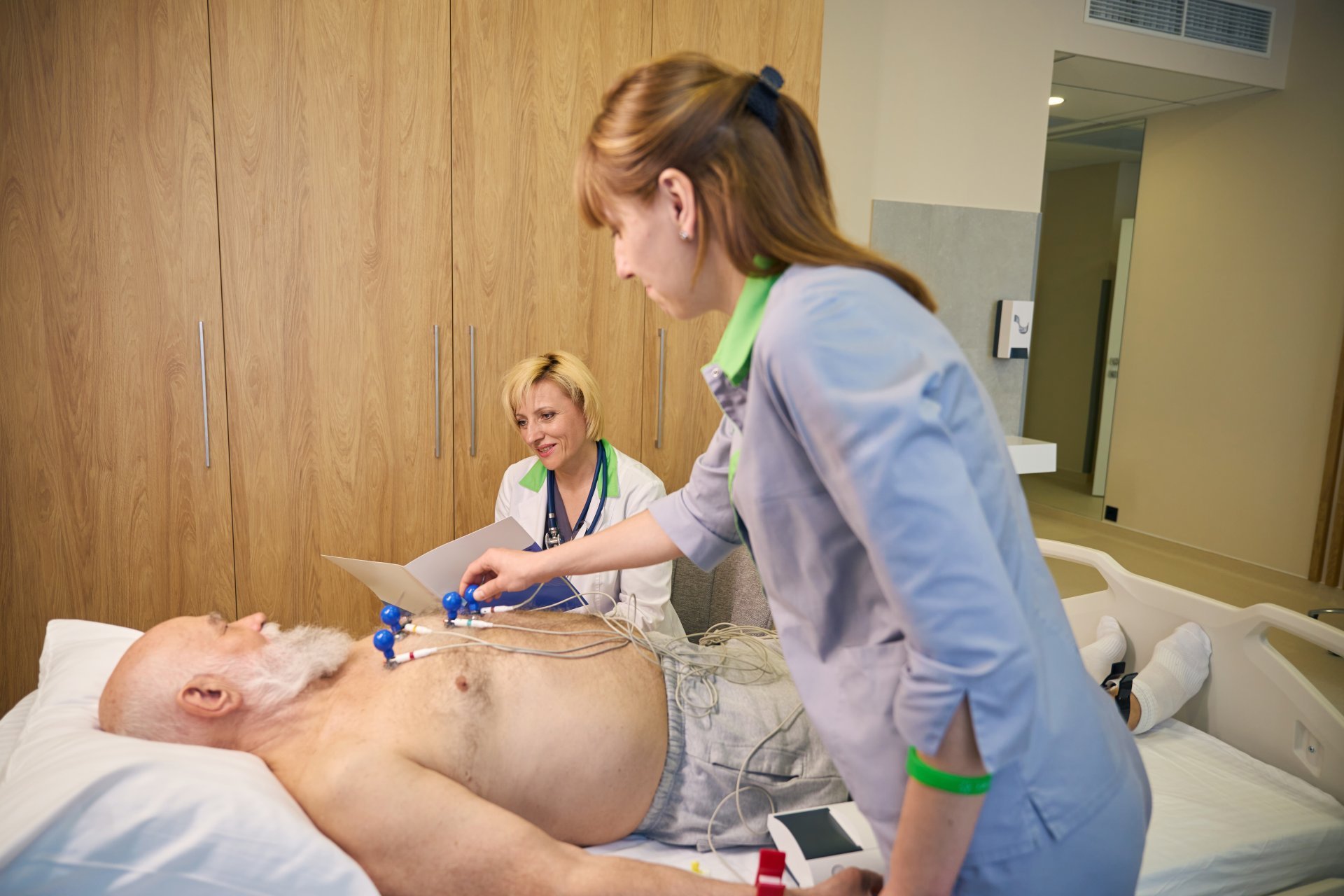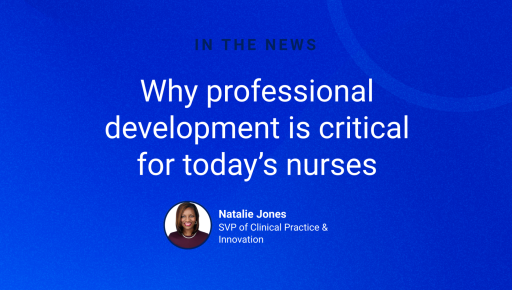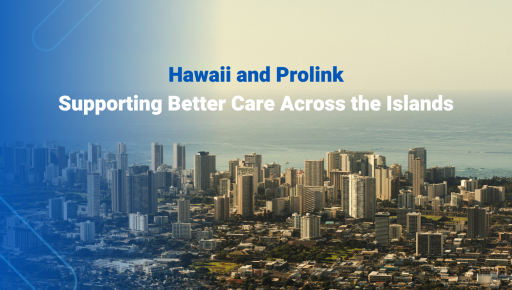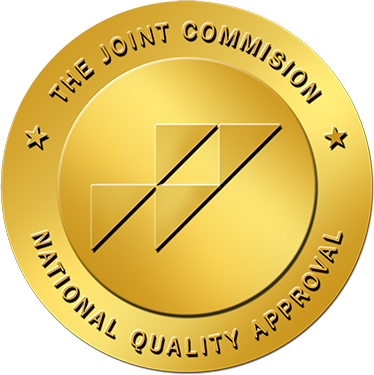If you’ve set your sights on a nursing career, one of your first decisions is to choose what type of specialty, if any, you want to pursue. Your dream job might be working with children as a PICU nurse or helping patients in an emergency setting as an ICU nurse. Along with your preferences, however, the right path also depends on job opportunities and salaries.
The latter has led many to consider telemetry nursing. Telemetry nurses can earn between $52,000 and $107,000 per year, which makes this specialized nursing role one of healthcare's most rewarding careers. The national average salary of $73,000 for telemetry nurses offers the chance to make an excellent living while helping people who are facing serious health conditions.
Modern healthcare relies heavily on telemetry nursing expertise. These specialized nurses use advanced equipment to monitor patients' heart conditions and interpret EKG strips while responding quickly to vital sign changes.
The Bureau of Labor Statistics expects registered nurse positions like telemetry nursing to grow 6% by 2033. New opportunities continue to emerge in hospitals, outpatient care centers, and clinics.
Let's look at what makes telemetry nursing an excellent career choice. We'll cover everything from daily tasks and education requirements to advancement opportunities that extend beyond traditional hospital settings.
What does a telemetry nurse do?
Telemetry nurses are tasked with ensuring cardiac patients stay stable and on the right track to recovery. They play a vital role as a patient’s care team responds to heart-related conditions. They use advanced technology to track their patients' vital signs and cardiac rhythms without interruption. Their role goes beyond simple monitoring—they need the clinical judgment skills to interpret data and act quickly when they spot abnormalities.
Continuous cardiac monitoring
The life-blood of a telemetry nurse's daily routine is watching patients' heart rhythms and vital signs through telemetry equipment. They use specialized monitoring systems to track electrocardiograms (EKGs), blood pressure, respiratory rates, and oxygen saturation levels 24/7. This non-stop surveillance helps them detect subtle changes that might show a patient's condition getting worse.
These nurses must know how to recognize various cardiac rhythms and understand what abnormalities mean. They look at EKG readings to spot arrhythmias, ST-segment changes, and other cardiac irregularities. They also interpret these readings as part of the patient's complete clinical picture.
During each shift, nurses get, analyze, and document cardiac rhythms, especially when changes occur or new arrhythmias develop. Their notes usually show heart rate, PR intervals, QRS intervals, T wave positions, and corrected QT intervals. This detailed analysis helps the healthcare team make better decisions about patient care.
Patient assessment and care planning
These nurses do more than monitor. They conduct complete patient assessments that include physical examinations and detailed reviews of medical histories. They assess cardiovascular and respiratory systems and pay close attention to heart sounds, pulse quality, breathing patterns, and signs of respiratory distress.
Care planning involves creating unique approaches based on each patient's cardiac conditions. Telemetry nurses give cardiac medications like antiarrhythmics, beta-blockers, and vasodilators and watch their effects carefully. They also assess how long to keep monitoring patients and work together with physicians to set appropriate durations based on the American Heart Association's practice standards.
Patient education is another significant responsibility. Nurses teach patients and their families about heart conditions, treatments, and lifestyle changes needed for better cardiac health. They give clear instructions about medications, activity limits, and warning signs that need immediate medical attention.
Emergency response coordination
Cardiac emergencies require quick and effective responses from telemetry nurses. They train to recognize life-threatening arrhythmias and start appropriate interventions before a patient's condition becomes critical. Research shows that non-stop monitoring is especially important for patients who have cardiac conditions, are recovering from cardiac surgery, or might develop cardiac issues.
These nurses often lead emergency responses during code situations. They work closely with rapid response teams, physicians, and other healthcare professionals to deliver critical care smoothly. Clear communication and decisive action can substantially affect patient outcomes in these high-stress situations.
Nurses must document all emergency interventions completely and join post-event discussions to improve future responses. They practice emergency protocols regularly and keep their Basic Life Support (BLS) and Advanced Cardiovascular Life Support (ACLS) certifications current.
Telemetry nursing continues to grow as healthcare technology advances. These nurses now work beyond hospitals in outpatient cardiac care centers, home health environments, and telehealth monitoring services. This expansion shows how valuable telemetry nursing has become in managing cardiac patients throughout their care journey.

Education pathway to telemetry nursing
The path to becoming a telemetry nurse starts with basic education and builds through specialized training and certifications. You need both formal education and hands-on experience to master cardiac monitoring. This specialized role requires dedicated preparation and technical expertise.
Required nursing degrees
To become a telemetry nurse, you must first become an RN. This means graduating from high school or getting your GED, then earning your nursing degree at an accredited program.
Two main educational paths exist: an Associate Degree in Nursing (ADN) or a Bachelor of Science in Nursing (BSN). Both degrees let graduates take the NCLEX-RN examination. However, telemetry units now prefer BSN-prepared nurses.
Nursing program graduates must pass the National Council Licensure Examination for Registered Nurses (NCLEX-RN) to get their license. The National Council of State Boards of Nursing administers this $200 examination.
This exam takes five hours, and you will answer between 85 and 150 questions on various subjects. Some topics covered on the NCLEX-RN exam include:
- Maintaining a safe and effective care environment
- Health promotion and maintenance
- Safety and infection prevention
- Psychosocial integrity
You’ll receive your official results six weeks after the exam. Newly licensed nurses usually gain general nursing experience before moving to specialized telemetry roles.
Telemetry-specific training programs
Registered nurses can pursue telemetry-specific training after getting clinical experience. The National Telemetry Association offers complete online programs for working nurses.
These programs help nurses get telemetry certification while keeping their current jobs. Students learn to monitor vital signs, interpret cardiac rhythms, and work with telemetry equipment.
Telemetry training courses typically include:
- Cardiac rhythm monitoring techniques and interpretation
- Basic and advanced life support protocols
- Medication administration and monitoring for cardiac patients
- Patient assessment before, during, and after invasive procedures
- Recognition of cardiopulmonary emergencies
The National Telemetry Association's certification exam takes 180 minutes and contains 303 questions about telemetry, anatomy, and physiology. Candidates need an 80% or higher score to pass and get two attempts. Nurses who complete this certification show they can monitor patients in cardiac care units, intensive care units, and step-down units.
Essential certifications for career advancement
Several certifications can improve career prospects beyond basic telemetry training. The American Association of Critical-Care Nurses (AACN) offers the Progressive Care Certified Nurse (PCCN) certification, which telemetry nurses value highly. Candidates need:
- A current, unencumbered RN license
- 1,750 hours in direct care of acutely ill adult patients during the previous two years (with 875 hours in the most recent year) OR
- 2,000 hours in direct care over five years (with 144 hours in the most recent year)
This certification shows excellence in caring for acutely ill adult patients and can boost marketability and salary potential.
Most certifications need renewal every two to three years through continuing education or retesting. PCCN certification renews every three years, while ACLS recertification happens every two years. Telemetry nurses who maintain these credentials stay current with cardiac care standards and create opportunities for advancement in this specialized field.
Why hospitals are expanding telemetry units
Hospitals across the country are expanding their telemetry units to meet today's healthcare needs. This expansion shows both medical necessity and smart economics as healthcare facilities adapt to new patient populations.
Increased patient acuity levels
Patients coming to general hospital units now have more complex conditions than ever before. This change has created a significant need to monitor patients more closely outside traditional intensive care units.
Research shows that between 10% and 13% of patient hospital deaths happened because staff didn't spot problems in time or act quickly enough. These numbers explain why hospitals want better telemetry capabilities. The sooner doctors catch serious changes in vital signs, the better chance they have to help patients.
Telemetry monitoring works as a safety net for at-risk patients who don't need intensive care. About 8% of cardiac arrests happen without anyone watching, which makes telemetry monitoring a vital way to watch patients between regular vital sign checks.
Affordable alternative to ICU care
The numbers make sense financially too. Telemetry units cost much less than ICU placement. Most hospitals keep a nurse-to-patient ratio of 1:4 to 1:6 in telemetry units, while ICUs need one nurse for every two patients. This staffing difference saves hospitals substantial money.
The largest longitudinal study found that a 316-bed hospital using continuous monitoring devices in its medical-surgical unit saved between USD 3 and 9 million over five years. The investment paid off within 6–9 months.
Improved patient outcomes
Clinical evidence strongly supports expanding telemetry beyond just saving money. Hospitals with detailed telemetry monitoring programs have seen remarkable improvements in patient health.
A notable study showed continuous monitoring cut death rates from opioid-induced breathing problems from 0.02% to 0.0009% (p=0.03). This 95% reduction shows how telemetry saves lives.
Doctors can spot problems before they become emergencies with telemetry monitoring. Knowing how to catch irregular heart rhythms early helps especially with sepsis patients, post-surgery complications, and patients taking heart-affecting medications.
The core team needs proper training to make telemetry expansion work. Successful hospitals have trained specialized telemetry nurses who understand complex cardiac data and know what to do in emergencies. This expertise makes these units even more valuable.
Telemetry nursing beyond hospital settings
Telemetry nursing has grown way beyond traditional hospital walls. This expansion creates job opportunities for these specialized healthcare professionals in a variety of settings. Modern telemetry nurses now use advanced monitoring technologies. They provide critical cardiac care in several non-hospital environments and meet patients where they are while ensuring high-quality surveillance.
Home-based telemetry monitoring opportunities
Home telemetry monitoring is a growing sector that lets patients get continuous cardiac surveillance without staying in hospitals. We used Bluetooth-enabled devices to send immediate cardiac data directly to healthcare providers. Studies showed that remote monitoring finds abnormal heart rhythms faster, cuts down hospital and emergency visits, and helps patients enjoy a better quality of life.
Telemetry nurses in home-based settings coordinate care through devices like the MyCareLink Heart mobile app or dedicated home communicators. These devices send heart data through Wi-Fi or cellular networks. The nurses read transmitted EKG readings, review oxygen saturation levels, and step in quickly when they spot abnormalities.
Outpatient cardiac care centers
Outpatient facilities give telemetry nurses a chance to work with ambulatory patients who just need cardiac monitoring. These nurses run diagnostic procedures, EKGs, and complete the work to be done to review patient conditions. Unlike hospitals, patients in outpatient settings usually have lower risk profiles and don't need such intensive monitoring.
The core team at specialized cardiac care centers includes telemetry nurses who handle pre-procedure education, post-procedure monitoring, and ongoing cardiac assessment. These professionals manage medication plans and help patients move safely between different care levels.
Telehealth monitoring services
Virtual monitoring capabilities have transformed how telemetry nurses deliver care. Remote video monitoring (RVM) solutions blend two-way audio-video communication with continuous vital sign tracking. This setup lets nurses watch patients from centralized locations.
Telehealth monitoring lets telemetry nurses reach more patients while easing physical demands. This is especially helpful in rural areas where it helps overcome distance barriers to specialized cardiac care. As technology keeps advancing, telemetry nurses are becoming vital links between sophisticated monitoring systems and patients managing cardiac conditions at home.

Career growth strategies for telemetry nurses
Telemetry nurses can take their careers in several exciting directions beyond traditional bedside monitoring. Their specialized cardiac care skills are the foundations of growth opportunities in multiple areas.
Specialization options
Telemetry nurses can boost their expertise and market value through specialty certifications. The Progressive Care Certified Nurse (PCCN) credential focuses on acutely ill adult patients and needs 1,750 hours of direct bedside care experience within two years before applying.
Another important credential is cardiac medicine certification (CMC). This is a good subspecialty for nurses who wish to provide direct care to critically ill cardiac patients. To obtain a CMC, you must have an unencumbered RN or APRN license and a nationally accredited clinical nursing specialty certification. You must also complete clinical practice hour requirements, which come in two-year and five-year options.
Cardiac surgery certification (CSC) is another option. A nurse with a CSC can provide care to critically ill patients who have received cardiac surgery. The requirements are similar to that of the CMC.
A nurse who would like to become a remote monitoring specialist can become a certified critical care registered nurse (CCRN) through the tele-critical care eligibility pathway. This credential allows you to provide care to acutely or critically ill patients in a tele-critical care setting.
These certifications often lead to better pay, and many hospitals offer incentives like higher hourly rates or one-time bonuses when nurses complete their certification.
Leadership pathways
Clinical expertise helps telemetry nurses move into management roles. The journey usually starts with becoming a charge nurse and can lead to clinical nurse manager positions overseeing telemetry units. Research shows nurse managers do better with structured mentorship programs that provide support during their onboarding.
Future leaders should join hospital committees and participate in shared governance to showcase their leadership skills. Management-focused continuing education helps nurses learn the business side of healthcare leadership, including budgeting, staff management, and quality improvement projects.
Advanced practice roles
Nurses who want more independence can become advanced practice registered nurses (APRNs). This path requires a Master of Science in Nursing (MSN) or Doctor of Nursing Practice (DNP) degree with cardiovascular focus.
One popular advanced practice option is that of cardiovascular nurse practitioner (CVNP). A CVNP is a highly specialized APRN who helps patients who have chronic heart conditions or who are at risk of developing them. They support cardiologists by performing assessments, treating patients, and offering postoperative care.
Becoming a clinical nurse specialist (CNS) in cardiovascular care is another option. These specialists diagnose, prescribe, and treat patients with heart conditions. They offer hands-on care while also working to optimize organizational systems.
You can also pursue a role as an educator, where you will train new telemetry nurses and improve overall patient outcomes. You can work at colleges, universities, vocational schools, and even teaching hospitals.
These advanced positions typically come with much higher salaries. This is a big deal as it means significant financial growth beyond standard telemetry nursing roles.
Choosing your nursing path
Telemetry nursing is a rewarding career path that brings excellent financial benefits and a variety of growth opportunities. The field has expanded beyond traditional hospital settings. You can now find opportunities in home-based care, outpatient centers, and telehealth services. This creates exciting possibilities for specialized nurses.
Your success in this field depends on continuous professional development. Nurses must get certifications, specialized training, and stay up to date with advancing healthcare technologies. Those who invest in their education and pursue leadership roles or advanced practice positions are better positioned to advance their careers.
The projected 6% growth in telemetry and other registered nursing positions through 2033 shows how much cardiac care specialists are needed. Healthcare facilities recognize telemetry's value in improving patient outcomes while cutting costs. This blend of clinical importance and economical solutions will give telemetry nursing a vital place in healthcare specialty for years ahead.
At Prolink, our team of recruiters helps you find the right career path. We work with leading health systems throughout the country to connect you with the most exciting nursing jobs available—local and travel, permanent and contract.
Get matched with a Prolink recruiter today to get started.
FAQs: Telemetry nursing
What is the job market outlook for telemetry nursing?
The demand for telemetry nurses is expected to grow significantly, with projections indicating a 6% increase in positions by 2033. This growth is driven by the expanding need for cardiac care specialists and the recognition of telemetry's value in improving patient outcomes while reducing healthcare costs.
What are the primary responsibilities of a telemetry nurse?
Telemetry nurses are responsible for continuous cardiac monitoring, patient assessment and care planning, and emergency response coordination. They interpret EKG readings, administer cardiac medications, educate patients about heart conditions, and play a crucial role in recognizing and responding to life-threatening arrhythmias.
What educational path should one follow to become a telemetry nurse?
To become a telemetry nurse, one must first obtain a nursing degree (preferably a BSN) and pass the NCLEX-RN examination. After gaining general nursing experience, aspiring telemetry nurses can pursue specialized training programs and certifications such as the Progressive Care Certified Nurse (PCCN) credential.
Are there opportunities for telemetry nurses outside hospital settings?
Yes, telemetry nursing has expanded beyond traditional hospital settings. Opportunities now exist in home-based telemetry monitoring, outpatient cardiac care centers, and telehealth monitoring services. These roles allow telemetry nurses to provide critical cardiac care in various non-hospital environments.
What are some career growth strategies for experienced telemetry nurses?
Experienced telemetry nurses can advance their careers through specialization options like obtaining additional certifications, pursuing leadership pathways such as becoming a charge nurse or clinical nurse manager, or transitioning into advanced practice roles like Cardiac Nurse Practitioner or Clinical Nurse Specialist in cardiovascular care.









